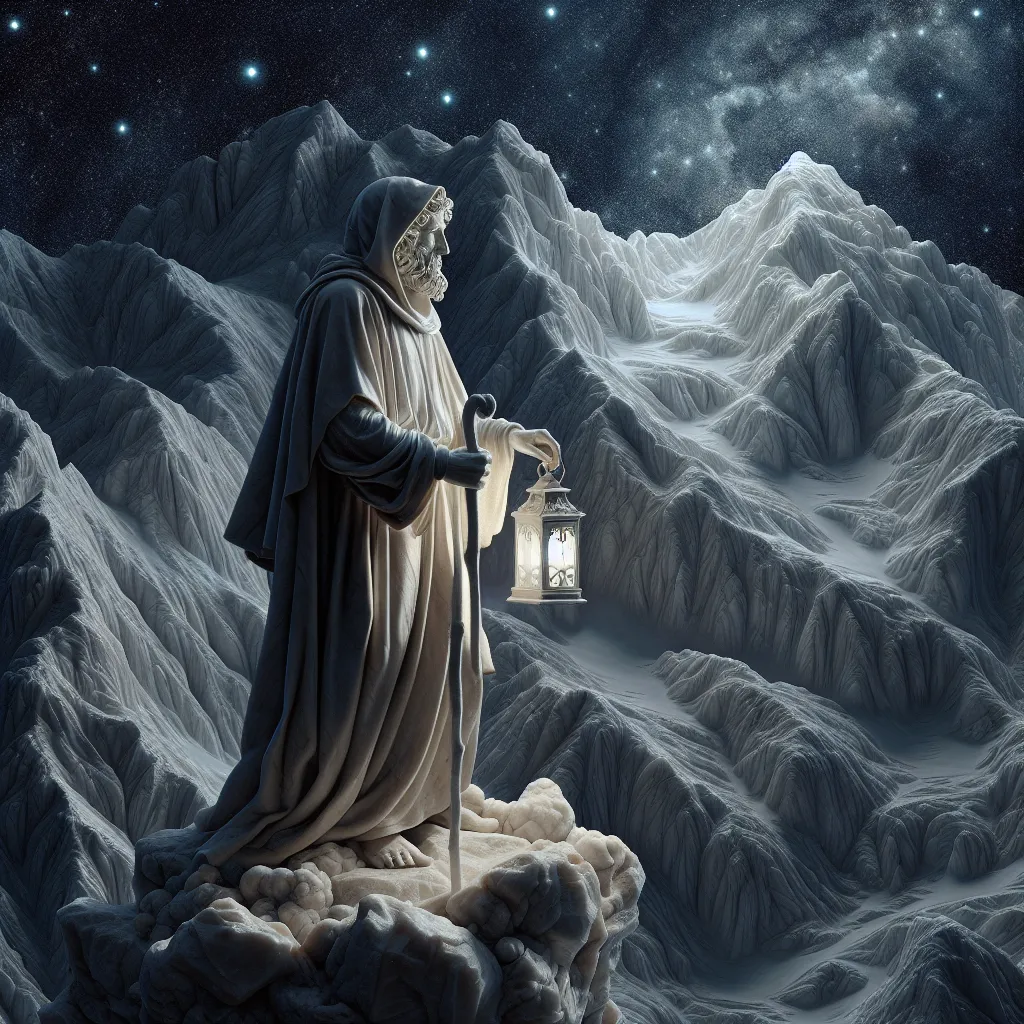
- Published on
- Authors

- Name
- You
The Hermit Card: Seeking Solitude and Inner Reflection
Introduction
In the diverse landscape of the Tarot, the Hermit card stands out as a beacon of solitude and introspection. Its imagery and symbolism speak profoundly to those seeking inner guidance and wisdom. This article delves into the mystique of the Hermit card, blending advanced scientific perspectives with mystical wisdom to provide a comprehensive understanding of its significance.
A Historical Perspective
Origins of the Tarot
The Tarot's origins date back to the 15th century, with its roots firmly planted in Southern Europe. Originally a card game, the Tarot's enigmatic symbols and images gradually evolved into tools for divination and spiritual insight.
| Timeline | Milestone |
|---|---|
| 15th Century | Earliest Tarot decks appear in Italy. |
| 18th Century | Transition into divinatory practices. |
| 20th Century | Tarot expands globally with various interpretations. |
The Hermit Card: Symbolism and Imagery
Visual Elements
The Hermit card typically depicts an elderly figure, cloaked, carrying a lantern in one hand and a staff in the other. The lantern, often depicted with a six-pointed star, illuminates the path ahead, symbolizing wisdom, enlightenment, and inner guidance.
Keywords
| Keyword | Explanation |
|---|---|
| Solitude | The Hermit's journey is solitary, emphasizing the need for time alone. |
| Introspection | Encourages deep self-reflection and examination of one's inner world. |
| Inner Guidance | The lantern represents the inner light that guides through the darkness. |
| Wisdom | The Hermit is a seeker of knowledge and spiritual understanding. |
Scientific Perspectives
Psychological Insights
Modern psychology mirrors the Hermit's call for introspection. Carl Jung’s concept of individuation aligns with the Hermit’s journey toward self-discovery and personal growth.
Neurological Basis
Neuroscientific research reveals that periods of solitude can lead to increased brain plasticity, enhancing cognitive functions associated with insight and problem-solving. The default mode network (DMN), active during rest and introspection, supports this transformative process.
Mystical Wisdom
Hermetic Philosophy
The Hermit’s name evokes the principles of Hermeticism, a spiritual tradition dating back to ancient Egypt and Greece. Embracing the maxim "As above, so below," the Hermit’s search for truth resonates with Hermetic teachings of inner and outer correspondence.
Integration with Meditation
Practitioners often integrate the Hermit card into meditation practices, utilizing its imagery to facilitate deep introspection and connection with higher wisdom. Such meditative practices align with ancient mystical traditions, fostering spiritual elevation and clarity.
Practical Application in Readings
Self-Reflection Spread
To harness the Hermit’s introspective power, consider a self-reflection Tarot spread. Here’s a simple layout:
- Card 1: Current state of mind.
- Card 2: Inner challenges.
- Card 3: Hidden strengths.
- Card 4: Guidance for solitude.
- Card 5: Path to enlightenment.
Conclusion
The Hermit card invites us to pause and turn inward, seeking the wisdom that dwells within. By blending historical insights with modern scientific understanding, we uncover a deeper appreciation for this profound symbol. As we navigate our spiritual paths, the Hermit serves as a luminous guide, illuminating the way through the shadows of our inner worlds.
May the light of the Hermit’s lantern guide you towards your own inner truth and wisdom.
Feel free to share your personal experiences and reflections on the Hermit card in the comments below!
